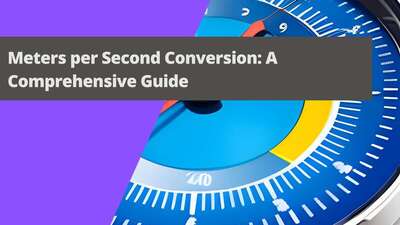Metric conversion units
Do you want to know how to make a metric system units conversion? Have you tried but still do not know how to convert metric system units? This article is for you! We will tell you a little about metric system units conversion, show you a few examples and, the most importantly, we will show you how to convert metric units easily, so keep reading.
Metric conversion of units
Before we move on to unit conversion metric units, you need to know what a metric system is. We know that theoretical parts are not so interesting as practice but we promise that we will keep to a minimum. So let’s start.
Metric system is nowadays known mostly as International System of Units, in abbreviated form SI. The SI is a modern form of metric system. Originally, the metric system was introduced in France in 1790s. Nowadays, the International System of Units is based on metre-kilogram-second-ampere (MKSA) system of units. These units were implemented to the metric system in the early 20th century.
What are other units in the SI system? Base units of the International System of Units are also kelvin, mole and candela. Kelvin is a unit of thermodynamic temperature. Mole is a unit of amount of substance. In turn, candela is a unit of luminous intensity.
In whole metric system, not only in the International System of Units, are also other units, like metric foot or litre.
Okay, this theoretical part is already behind us. You found out a little about the metric system and metric units, so we can move on to the more practical section.
Chart to convert metric units
One of the easiest way to make a metric system units conversion is to use a metric conversion units table. For many people is the clearest form of showing the results. Thanks to charts you can check units you are interested in and their equivalents in other units.
Supposing you want to convert metric units of mass. For instance, you need to convert 5 kilograms into grams. From a metric conversion chart you know that 1 kg = 1000 g. So how many grams are in 5 kilograms? Multiply 5 by 1000. It gives 5000, so 5 kilograms are equal 5000 grams.
Chart for converting metric units
We told you a little about kilograms and grams conversion so you know how to convert metric units of mass. What more can you find in metric charts? When can charts come in useful too? To be honest, whenever you need to convert metric units. For instance, when you want to convert metric units of length. Of course, thanks to charts you can also convert metric units of capacity. Tables enable converting metric units of area too.
As you can see, metric conversion units tables can be useful when it comes to any metric unit.
Converting metric units chart
Now it is time for converting metric units practice. As you may know, conversion between metric units is performed by shifting. What does it mean? To calculate one metric unit to another you just need to shift the decimal. When you convert bigger unit to smaller you have to shift right. On the other hand, if you want to calculate smaller unit to bigger you need to shift left. So let’s try this information in practice.
Let’s start with converting metric units of length. For instance, try to calculate 2 kilometers into meters. One kilometer is equal 100 meters. So how much is 2 kilometers? You need to shift the decimal point two places to the right. It gives 200 meters. It’s quite easy, isn’t it?
Time for another converting metric units of measurement. Let’s calculate 10 millimeters to meter. One millimeter is equal 0.001 meters. So this time you have to shift the decimal point three places to the left. It gives 0.01 meters.
Metric conversion units chart
You know how to convert metric units but do you need more practice? No problem! We have some proposals for you.
If you need more step by step examples you may like converting metric units video. Thanks to this you will see more examples with explanation before you move on to your own practice.
If you do not want to watch a video, check converting metric units ppt. PowerPoint presentations also can be helpful. You can find there some theory and step by step practical examples.
In turn, if you want to practice on your own you may like converting metric units of length worksheet. Thanks to this you can solve some math tasks and check your answers with a key. When it comes to converting metric units math drills are the best way to learn.
Do you prefer learning in a fun way? What about converting metric units games? For instance, you can take converting metric units quiz and compare your results with your friends.
As you can see, there are so many ways to practice metric units conversion. Just pick the best for you and finally say: I can convert metric units!
How to convert metric units
Do you have a trouble remembering all metric prefixes? We have something extra for you, that means acronym for converting metric units. Firstly, have a look at all metric prefixes:
- kilo,
- hecta,
- deca,
- base,
- deci,
- centi,
- milli.
And here is an acronym for converting metric units: “King Henry died by drinking chocolate milk”.
Converting metric units calculator
Do you prefer ready-made solutions instead of calculating on your own? For those of you we have a metric units calculator. Just enter the number of one metric unit to get the result in another metric unit. That’s it! You do not have to do anything more.
We hope that after reading this article you know how to convert metric units of length and other metric units too. So let’s calculate them - on your own or using our metric units calculator.









